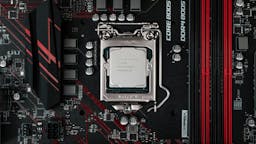Should I use JPG, PNG, or WebP for my website?
When it comes to website design and optimization, choosing the right image format plays a significant role in enhancing the user experience and optimizing the loading time. The debate between JPG, PNG, and WebP formats has been ongoing, with each format having its own advantages and disadvantages. In this blog, we will delve into the characteristics and use cases of these formats to help you make an informed decision for your website.
JPG (JPEG) Format
JPEG (Joint Photographic Experts Group) is one of the most popular image formats used on the web, particularly for photographs and complex images. It utilizes lossy compression, which means that some image data is discarded to reduce file size. This compression technique allows for significant file size reduction, making it ideal for websites where loading speed is a priority.
The JPG format excels in preserving the details and colors of photographs, making it the go-to choice for websites that heavily rely on high-quality imagery. However, it is worth noting that repeated saving and compression of JPG files can result in a loss of image quality, known as "generation loss."
Pros of using JPG format:
- Smaller file sizes compared to other formats, improving website loading speed.
- Suitable for photographs and complex images due to its ability to preserve details and colors.
- Broad browser support, making it compatible with various devices and platforms.
Cons of using JPG format:
- Lossy compression can result in a decrease in image quality over time.
- Limited support for transparency; JPG images do not support transparent backgrounds.
- Not suitable for images with sharp edges or text, as compression artifacts can be noticeable.
PNG Format
PNG (Portable Network Graphics) is a lossless image format that supports both 8-bit and 24-bit color depths. It was developed as an alternative to the GIF format, offering better compression without any loss of image quality. PNG is widely used for images with sharp edges, such as logos, icons, and illustrations, where preserving transparency is crucial.
The PNG format utilizes lossless compression, which means that no image data is lost during compression. This results in larger file sizes compared to JPG, but it ensures that the image quality remains intact. PNG is also capable of handling transparent backgrounds, making it ideal for overlaying images on different backgrounds.
Pros of using PNG format:
- Lossless compression ensures maximum image quality without any degradation.
- Supports transparency, allowing for seamless integration with various backgrounds.
- Well-suited for images with sharp edges, such as logos and icons.
- Widely supported by web browsers and image editing software.
Cons of using PNG format:
- Larger file sizes compared to JPG, which can impact website loading speed.
- Not as efficient as JPG for photographs or images with complex color gradients.
- Limited support for animations; PNG is primarily used for static images.
WebP Format
WebP is a relatively new image format developed by Google that offers a balance between image quality and file size reduction. It employs both lossy and lossless compression techniques, providing better compression efficiency than JPG and PNG formats. WebP is specifically designed to optimize image loading speed and enhance web performance.
By utilizing advanced compression algorithms, WebP can significantly reduce the file size of images while maintaining a high level of visual quality. According to Google's own data, WebP lossless compression is 26% smaller than PNGs, and its lossy compression is 25-34% smaller than JPEGs. This reduction in file size can lead to faster website loading times, especially on mobile devices with limited bandwidth.
Pros of using WebP format:
- Superior compression efficiency, resulting in smaller file sizes and faster website loading speed.
- Supports both lossy and lossless compression, allowing for flexibility in choosing the compression level.
- Maintains high-quality visuals, making it suitable for a wide range of images.
- Increasing browser support, with major browsers now supporting WebP natively.
Cons of using WebP format:
- Limited support in older web browsers, which may require fallback options for compatibility.
- Incompatibility with some image editing software, requiring conversion from other formats.
Choosing the right image format for your website depends on the type of images you are using and the desired balance between file size and image quality. For photographs and complex images, JPG format is a reliable choice due to its smaller file sizes and broad browser support. On the other hand, PNG format excels in preserving image quality and transparency, making it ideal for logos and graphics with sharp edges.
WebP format presents a compelling option for those seeking optimal image compression and loading speed. With its advanced compression algorithms and browser support, WebP can significantly reduce file sizes without compromising image quality. However, it is important to consider the limitations of browser compatibility, especially for older browsers that do not support WebP natively.
Ultimately, the decision between JPG, PNG, and WebP should be based on your specific website requirements and target audience. Consider the type of images you are using, the desired loading speed, and the level of browser support required. By choosing the most suitable image format, you can enhance the overall user experience and optimize your website's performance.












